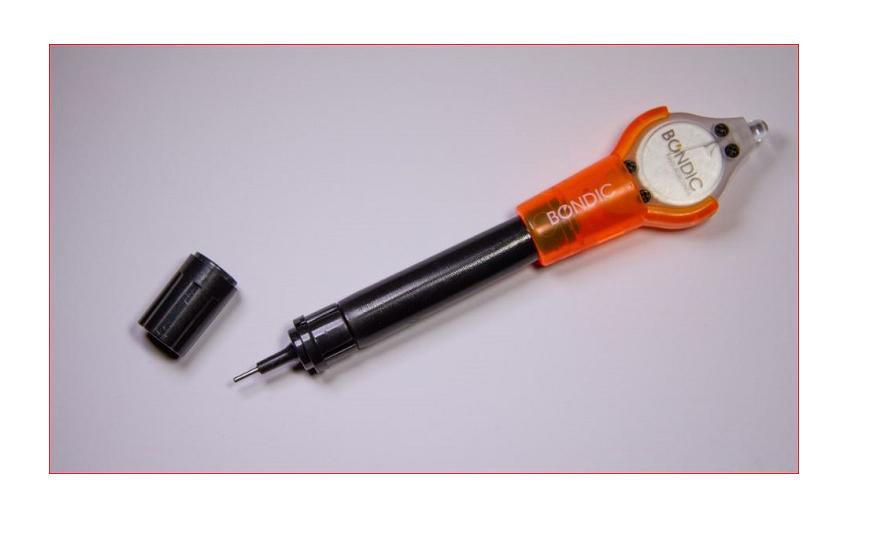I finally got a chance to take some pics of my next project, these bandits and guards.
The bandits are a mix of Hat's reissued Airfix "Robin Hood" figures and Zvezda's medieval peasant levy. The guards are mostly Caesar medieval soldiers, with a couple Accurate knights (acquired in a trade with Mike) thrown in. Most are out of the box, but I indulged in a few mods.
Fantasy guards are often depicted with polearms and crossbows for some reason, so I tried to select the Caesar figures that were so armed. This only left a few available poses. The answer: headswaps, plus some knifework to remove scabbards and the like for variety.
The bandits didn't need as many mods, but some of them that would otherwise have been wielding scythes and similar peasant weapons got armswaps (a scythe-wielding bandit seemed very strange!). Here you can see my new fascination in use. Normally when doing mods like this, I'd use wood glue to fill any gaps. But lately I've been experimenting with a newish product called Bondic, and I'm pretty happy with it.
Bondic is a non-adhesive bonding agent that's sort of magical. It's a solution with various plastic elements as the solutes. These plastics tend to form a solid,
I've found all sorts of household applications for the stuff, but the relevant use is for filling gaps in modded figures.
I also made up this bard-type figure, using an Imex pioneer figure for the torso (Sean did something similar, but I can't find the post right now).
You can perhaps see that the gaps around the arms of the gray Zvezda figures have some clear plastic around them. The base of the tan Hat fig also has some to fill the visible part of the hole in the washer I used as a base. That's the cured Bondic in use. The big advantage Bondic has over glue for this sort of thing is ease of control: you can add as little as you need, it tends to flow into crevices, and you can always build up applications if you need more. It's also a lot more durable than glue, as it's solid plastic. Just remember that it can't be used to glue things together like adhesive, but for filling visible gaps it's hard to beat.
I also took some shots after priming, just so you can see how it looks painted. No gaps!
I'm still in the middle of a big freelance job, but hopefully I'll have more time to work on figures soon. Thanks for checking in!









Nice prototypes.
ReplyDeleteI saw an add earlier for Bondic, and it was advertised as "liquid plastic welder", but it really sounds a more like dental resin or Tamiya light curing putty. I was curious about it, but didn't investigate further. Is it really UV curing, or is the light actually a blue light?
ReplyDeleteYou can use it for welding-like applications; they tout it as being able to repair broken glasses, for example. Just remember that even in these cases you are filling a gap, not glueing the pieces together. Basically if the Bondic liquid is covered, you can't get it to set, unlike with a glue. It won't work for putting together a plastic kit, but it's great for filling gaps that have been glued together.
DeleteI believe Bondic was in fact developed from a dental resin, so you're on the right track. They say it's a UV light, so I believe them! It doesn't do anything under a normal lamp light, but the bulb that comes with the kit causes it to set really fast. Here's a description of how it works from the company's FAQ:
"Bondic® is basically liquid molecules or “pre-plastic” in liquid format that when exposed to our UV light are allowed to connect and become the hard plastic you know and depend on in everyday life. They are attracted to each other but separated by the liquid but UV light suddenly breaks down the part of the liquid that kept them separate and the molecules do what they want to naturally do which is align and organize themselves. When that happens its plastic. Normally its down [sic] with heat and injection molded! Here it’s done with light. The movement of them getting organized actually creates a second of heat in the Bondic®. Sometimes you can see a wisp of steam or smoke if you make a large drop of it. That’s the heat making the liquid evaporate!"
They look great, keep up the good work
ReplyDeleteHey, any idea where I could buy some Caesar Miniatures-Adventurers, I can't seem to find them on line, thanks
ReplyDeleteTheir webstore says they have a couple: http://www.minitoysoldier.com/prolist.asp?id=363
DeleteClever conversion with the Imex pioneer ..I´ll "steal" that :-)
ReplyDelete